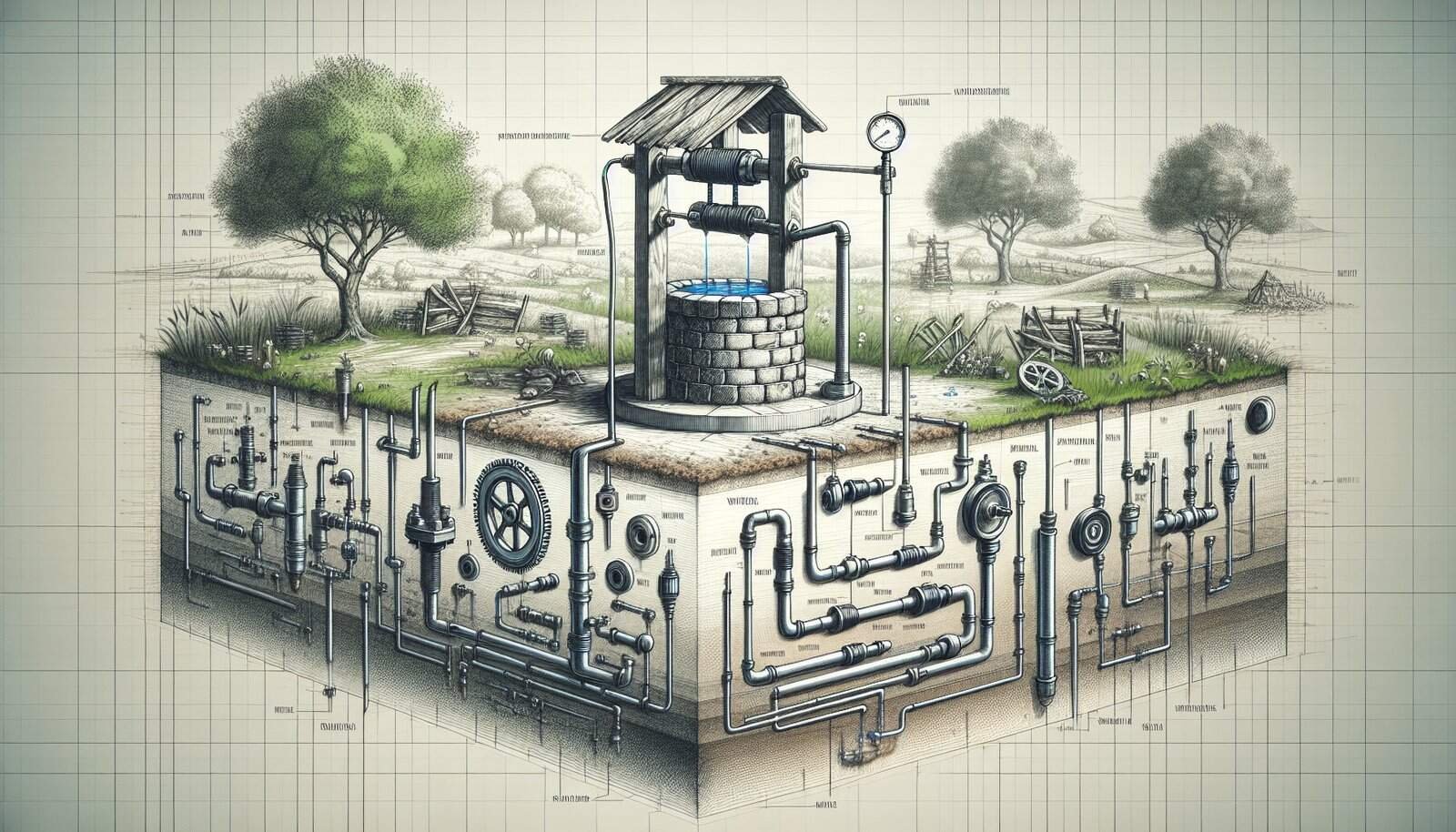Have you ever turned on the tap in your home only to experience an unexpected sputter before the water started flowing normally? Or perhaps you’ve noticed that sometimes your shower pressure is strong, while at other times, it’s disappointingly weak. If you rely on a well for your water supply, fluctuating water pressure can be particularly frustrating and confusing. Understanding the common causes behind these fluctuations can help you manage the issue effectively and enjoy a consistent water supply.

Understanding Water Pressure in Wells
To grasp why water pressure from a well might fluctuate, it’s important to first understand how a well system works. Essentially, your well taps into an underground water source, uses a pump to bring water to the surface, and then sends it into your plumbing system. The pressure you experience at the faucet depends on several factors, including the well’s depth, the pump’s efficiency, and the condition of your plumbing.
The Role of the Pump
The pump is the heart of your well water system. It draws water from underground and delivers it to your home. Depending on the setup, you might have a submersible pump located in the well itself or a jet pump positioned at ground level. If the pump isn’t working efficiently, this can lead to pressure issues.
Pressure Tanks and Their Function
Most well systems include a pressure tank. This tank maintains a consistent pressure in the water lines by storing water under pressure. When the pressure drops below a certain point, the pump fills the tank, restoring the pressure. If the tank is not functioning properly, you might experience pressure fluctuations in your home.
Common Causes of Fluctuating Water Pressure
There are several potential causes for fluctuating water pressure in wells. Identifying the correct cause is a crucial step in resolving the issue.
Pump Problems
One of the most common reasons for water pressure issues is a problem with the well pump. Over time, pumps can wear out or become clogged, which affects their ability to maintain a steady flow of water.
- Worn-out Pump: If your pump is older, it may not be able to maintain proper pressure because the components have deteriorated over time.
- Clogged Pump: Sediment and mineral buildup can clog a pump, restricting water flow and causing fluctuations in pressure.
Pressure Tank Issues
The pressure tank plays a vital role in regulating water pressure. If the tank isn’t functioning correctly, it can lead to pressure changes.
- Waterlogged Tank: A pressure tank that’s filled with too much water won’t pressurize correctly, leading to pressure inconsistencies.
- Faulty Pressure Switch: This switch signals the pump when to start and stop. If it’s faulty, it might not trigger the pump at the right times, causing pressure fluctuations.
Plumbing System Malfunctions
Sometimes, the issue might not lie in the well system at all but rather in the home plumbing.
- Leaky Pipes: Any leaks in the plumbing can cause a drop in pressure.
- Corroded or Blocked Pipes: Over time, pipes can corrode or become blocked with mineral deposits, affecting water flow.
Seasonal Changes and Water Demand
Water pressure can fluctuate due to seasonal changes and varying demand for water.
- Drought Conditions: In times of drought, the water table can drop, making it more challenging for your well system to maintain pressure.
- High Water Demand: If multiple taps, showers, or appliances are used simultaneously, the pressure can temporarily drop.

Diagnosing the Issue
To address fluctuating water pressure effectively, it’s essential to diagnose the problem accurately. Here’s how you can start:
Check the Pressure Gauge
Most systems have a pressure gauge that gives you a reading of the pressure in the system. By monitoring this, you can determine if the pressure drop is happening at a specific time or under certain conditions.
Inspect the Pump and Tank
Check for any visible signs of wear and tear, listen for unusual sounds, and note any irregular behavior in the pump or tank. This can give you clues as to whether they are the source of the issue.
Evaluate Water Usage
Think about your water usage patterns. Are there specific times of day when the pressure drops? Is it related to high-demand periods? This evaluation might point toward the issue.

Addressing Pressure Fluctuations
Once you have a better idea of what might be causing the problem, you can take steps to address it.
Regular Maintenance
Regular maintenance of your well system, including the pump, tank, and plumbing, can prevent many of the issues that cause pressure fluctuations.
- Schedule Inspections: Regular inspections by a professional can identify potential problems before they become significant issues.
- Clean and Replace Components: Keeping the system clean and replacing worn components, like pumps and pressure switches, helps maintain consistent pressure.
Upgrading System Components
In some cases, upgrading components of your well system might be necessary to maintain consistent water pressure.
- Install a Larger Pressure Tank: A larger tank can store more pressurized water, aiding in maintaining a steady supply.
- Upgrade the Pump: If your current pump isn’t able to keep up with demand, consider upgrading to a more powerful model.
Manage Water Usage
Sometimes, adjusting your water usage can address pressure issues.
- Stagger Water Usage: Avoid using multiple water-heavy appliances at the same time.
- Install Water-Conserving Fixtures: This can help you make better use of your available water pressure.

FAQs About Well Water Pressure
Here are some common questions you might have about fluctuating water pressure in wells:
Can weather affect my well water pressure?
Yes, extreme weather conditions like drought or heavy rain can impact the water table, affecting your well’s performance.
How often should I maintain my well system?
It’s generally recommended to have your well system inspected annually by a professional to ensure it’s operating efficiently.
What should I do if I suspect a leak in my plumbing?
If you suspect a leak, it’s important to address it as soon as possible. Leaks not only affect water pressure but can also cause water damage and increased utility bills.

Conclusion
Fluctuating water pressure in wells can be a complicated issue, but understanding the common causes can help you find a resolution. By keeping up with regular maintenance, updating your system as needed, and managing your water use wisely, you can enjoy consistent water pressure in your home. If you’re struggling with persistent issues, don’t hesitate to seek professional assistance to ensure that your well system is running smoothly and efficiently.
